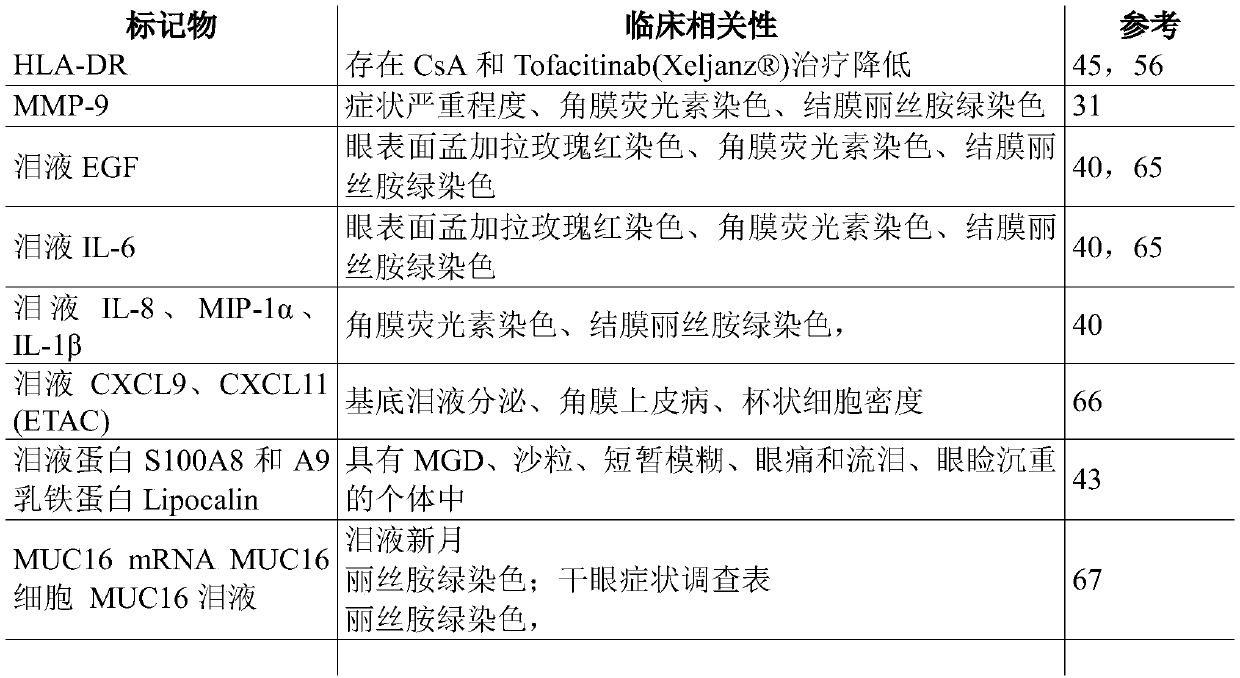Methods of diagnosing and treating dry eye syndrome and compositions for treating a human eye
A treatment composition and composition technology, applied in drug combination, physical therapy, disease diagnosis, etc., can solve the problem that there is no systematic and logical method for dry eye syndrome, and achieve easy practice, increased safety and comfort , reduce the effect of side effects and/or allergic reactions
- Summary
- Abstract
- Description
- Claims
- Application Information
AI Technical Summary
Problems solved by technology
Method used
Image
Examples
example 1
[0218] A series of different artificial tear treatment compositions were prepared. The therapeutic compositions according to the present invention are each suitable for the treatment of dry eye syndrome in humans.
[0219] ___________________
[0220] Table 1
[0221] Composition w / v%
[0222]
[0223]
[0224] As can be seen from the above, in some of the exemplified compositions (eg compositions G, H and L) a single oil is used, while in other compositions (compositions K, M and N) more than one oil is used , and in yet other compositions (Compositions I and J), no oil was used. Thus, a variety of dry eye therapeutic compositions can be prepared, each tailored to a different set of patient symptoms and tear properties. Although all compositions exemplified herein contain antimicrobial agents (BAK or sodium chlorite), it is to be understood that preservative-free (eg, sterile) forms of these or other compositions can also be prepared. Optionally, a viscosity-indu...
example 2
[0227] A group of patients were combined, selected for testing to determine the presence or absence of dry eye syndrome, each patient indicating that he / she was experiencing some degree of eye discomfort.
[0228] The test is performed by qualified medical personnel experienced in identifying the presence and severity of dry eye syndrome in a patient's eye. Tear fluid was collected, quantified, and analyzed for pH, osmolality, protein content, hydrophobic / hydrophilic balance, and viscosity, and compared to the mean of dry eye-unaffected individuals.
[0229] As a result of this test, it was determined that some people did not have dry eye syndrome, while others did. Specifically, among those identified as having dry eye syndrome, subgroups can be identified.
[0230] Patients in subgroup A had less than normal amounts of tears, but normal protein levels, indicating that the mucus (viscous) layer of tears was intact, the osmolality was within the normal range, and the differen...
example 3
[0240] A set of different eye skin care base compositions O to Y as shown in the table below were prepared. Each eye skin care base composition can be used alone to condition and hydrate the skin, or alternatively, as a basis for the addition of cosmetic additives such as eye shadow or eyeliner pigments and other ingredients, for patients with dry eye syndrome or to prevent eyes Stimulate.
[0241] ___________________
[0242] Table 2
[0243] Composition eye / skin w / v %
[0244]
[0245] In this example, (a group of acrylate polymers) formulations containing 80. If using then only add extra when necessary 80 to reach a final concentration of 0.25% (w / v). In addition, in these examples, the thickener should be or HPMC, CMC (carboxymethyl cellulose) are adjusted to each other in the respective ratios given here in order to achieve the desired viscosity.
PUM
 Login to View More
Login to View More Abstract
Description
Claims
Application Information
 Login to View More
Login to View More - R&D
- Intellectual Property
- Life Sciences
- Materials
- Tech Scout
- Unparalleled Data Quality
- Higher Quality Content
- 60% Fewer Hallucinations
Browse by: Latest US Patents, China's latest patents, Technical Efficacy Thesaurus, Application Domain, Technology Topic, Popular Technical Reports.
© 2025 PatSnap. All rights reserved.Legal|Privacy policy|Modern Slavery Act Transparency Statement|Sitemap|About US| Contact US: help@patsnap.com



